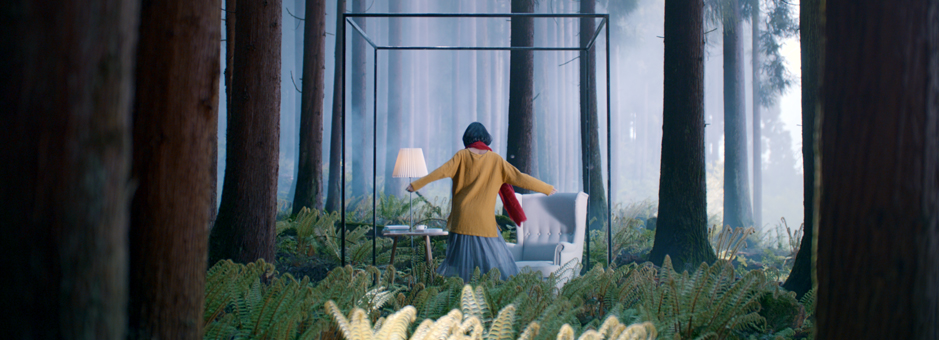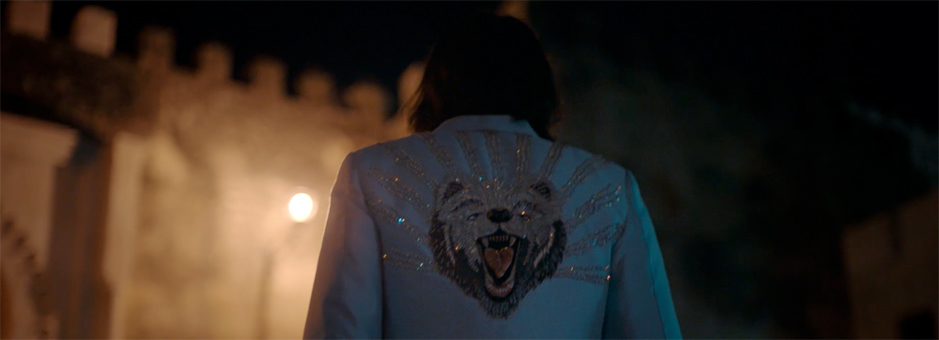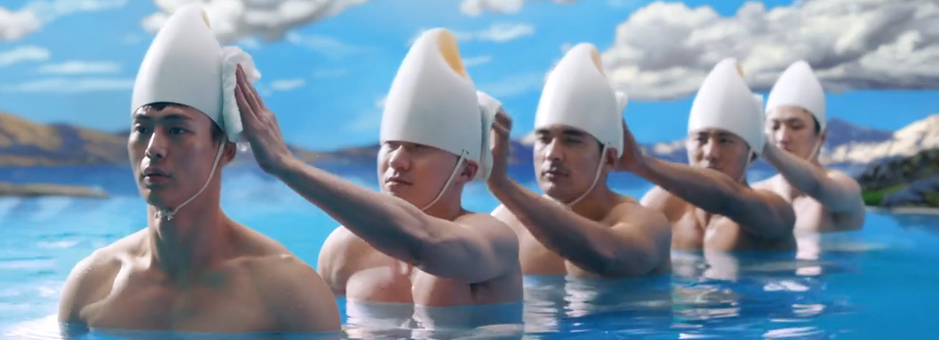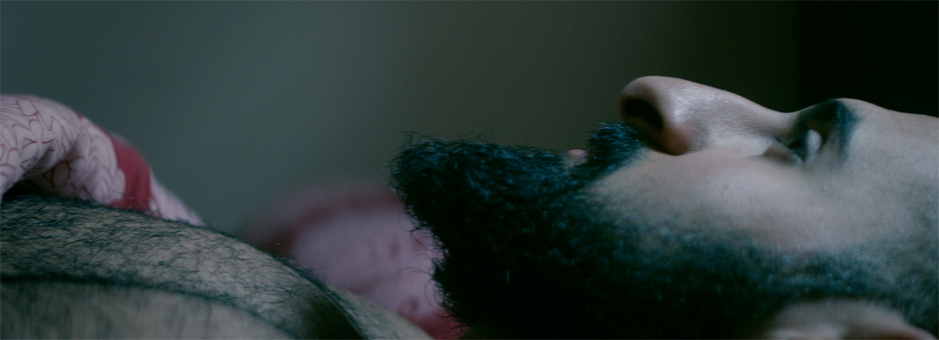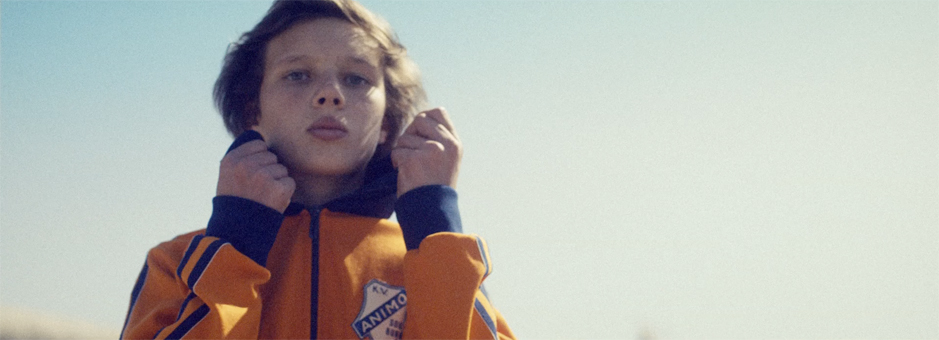Meet The Colourist
Simon Astbury
Head of Colour, Digital Domain Shanghai
Originally from England, Simon Astbury has developed a love for colour grading through the years and has worked in a wide range of genres, from Oscar-winning films to iconic ad campaigns and pop promos. During this time he has worked with people like Jack Cardiff, Roger Pratt, Tony Kaye, Paul WS Anderson and many more. Today Simon is the Head of Colour at Digital Domain in Shanghai.
How did you make your start in colour?
I started by accident. I graduated with a degree in music and thought the music industry was where I should be, I had vague ambitions to work in A&R. I started working in this industry briefly in the early 90s and pretty much hated it! I then went on to sound sync and dialogue edit in a tiny facility in Twickenham Film Studios where they had two MkIII Rank Cintel Telecines, serial numbers 050 and 121. It was love at first sight! The ‘Heath Robinson’ craziness of these systems, with their very limited colour tools in those days, PEC master control (operated with a tweaker) and primaries.
There was no machine control or editing so no stopping once you’d started. It was a great way to learn the craft, to hone an instinctive reaction to an image that still serves me well today. The green radioactive glow from the tube, the smell of film all went to make grading a much more visceral experience! The early 90s was a period of huge change in post. Avid was this new thing that the editors mistrusted, most of them were using Steenbecks at that time.
I got to work on some amazing films like Shakespeare in Love, Sense and Sensibility and Notting Hill amongst others. I also worked with a bunch of film legends including Roger Pratt, Jack Cardiff, Richard Attenborough, Alan Parker, Franco Zeferelli… and The Spice Girls!I felt it was time to leave my Soho comfort zone. I’d always intended to travel with the job, but the right opportunity never came up. Then when the offer to relocate came somewhat out of the blue, I consulted my family and we decided to go for it. Digital Domain has an incredible body of work and a global presence. It has been a leading innovator in post production for almost 25 years. It was also an opportunity to develop and grow a grading department worldwide in a company that is primarily focused on VFX.
Managing client expectations is always very important, but in China the client really is King or Queen. Making sure that the work remains good and not diluted by overthinking and over-tweaking is sometimes a very delicate negotiation.
So far I’ve introduced some enhanced workflows and defined training for the juniors and assistants. I’m also attempting to make remote grading available to any of our other offices around the world. I’m also promoting increased co-operation between our Shanghai and Beijing offices. Across these two sites we have some of China’s best commercial and movie grading talent so I’m making sure that we leverage that fantastic resource.
If it doesn’t sound trite, I would say that good, well executed work is the most enjoyable to grade. I love commercials because they afford the opportunity to go into detail and occasionally push things creatively. I love documentaries because the grade can enhance the story in so many different ways. I love dramas because the story arc and mood can be helped immensely by a good grade. I love movies because in my heart I’m a film nut and the opportunity to have your work in a cinema is an incredible buzz that will never ever get old.
What work are you the most proud of?
There are a few things that stand out for me, most recently a grade for the wonderful Director Nieto at Stink, for Wu Fang Zhai. It was great fun to throw away the rule book and do some crazy stuff. I think it came out really well.
There are a bunch of things that I’ve done over the years that I remember fondly, a travelogue for BBC4 called “Travels with a Tangerine” which was amazingly well shot on SD DVCAM. Some beautiful films for Volvo directed by Martin Swift and some epic stuff for Audi directed by Paul WS Anderson. An amazing multi-screen art installation “Mother’s Day” for the artist Smadar Dreyfuss about dispossessed stateless children in Israel.
Working with younger directors like Stella Scott has been a great experience – passing on knowledge and at the same time learning new visual languages help to keep everything fresh. At the other end of the spectrum is “The Human Centipede” trilogy – it’s not often that you get to be involved in a cultural phenomenon!
Can you describe a recent project and what Baselight tools were particularly beneficial?
Baselight is fantastic for complex VFX jobs. The Wu Fang Zhai project mentioned earlier was all shot on greenscreen with matte painted backgrounds, sometimes with complicated comps. It was really easy to assemble rough comps in Baselight to ensure the grade looked correct. Layer mode composite settings were particularly useful.
Baselight editions is also a brilliant tool for VFX heavy jobs. We have a top secret project on at the moment and the ability to have a renderless workflow between Baselight and Nuke is invaluable.
As a colourist what are your biggest strengths?
Difficult to say really, but I guess I’ve been doing it for a long time and can come up with creative solutions for most eventualities. Sometimes the client wants you to drive the session and come up with all the ideas, sometimes they want you to do as you are told and sometimes they want it to be a collaboration. I’m comfortable with any of these scenarios, but I’d add that the client is paying for my eyes and my interpretation, so sometimes you have to be the guide, even when the client has very definite ideas. You also have to be the arbiter of taste. So on occasion you have to be firm particularly when bad decisions are being made. I try to separate my ego from the work and create a calm but creative atmosphere in the grade suite. Music is hugely important, as well as a fully stocked drinks trolley!
The wonderful Colourist Bob Festa said that he asks people what they want their films to say, rather than how they want them to look and that’s pretty much my approach. I’ve been compared to an airline pilot or cruise ship Captain more than once….I’ll take that :-).
I worked exclusively in film for about half my career and I love it! It is tactile, it smells great, it feels good in your hands and of course many of the most memorable images in cinema were shot on it. The soft detail, intensity and richness of colour, the roll off into the whites and blacks is something that digital still finds hard to replicate. Also, the recent resurgence in Europe and the USA of film in shorts, commercials and promos is great to see. However, I find myself thinking about all those things I don’t miss about film such as weave, cell scratches, grain, wet gate TK and that buttock clenching moment when the lab manager tells you the reel had broken in the bath and 300 feet of neg had been destroyed. X-ray fogging! Oh my goodness, I have so many film horror stories.
Modern cameras produce amazingly clear images with great colour and response to light with far less in the way of insurmountable problems, I don’t see either as particularly better. Actually, I think decent glass and proper lighting are just as important as what camera or format you shoot on.
What are the biggest challenges you face today as a colourist?
There are a few but I don’t think they’re specific to colourists. Content is becoming continually more disposable. It’s more important than ever that respect for the craft, not only of colour grading but the whole production and post process, becomes central to every production. The proliferation of display devices is also a big subject, making sure that the grade looks good on phones, tablets, laptops and TV is an issue that will only get more challenging.
Do you have a routine when grading?
Yes, definitely. Although colour is incredibly subjective, I personally think that your process shouldn’t be. I strongly believe there’s a right and wrong way of going about a grade. Every colourist has a different process but there are definitely ways that work and ways that don’t. The longer I do the job the more important the psychological aspect of it becomes – how your choices in the grade affect the thoughts and emotions of the viewer, what really matters and what doesn’t. I’m always on a quest to distil the essence of a grade. A lot of the content I see now, in my opinion is over graded. We have such comprehensive tools now, so you don’t have to throw the kitchen sink at every shot. “Keep it simple” is a mantra I try to impress upon my juniors.
How long have you been working on Baselight?
I’ve been working on Baselight for just shy of a decade. I absolutely love it. My favourite thing about Baselight is what I call ‘redundancy of process’ by which I mean there are multiple ways of doing most grading operations – hue angle not working then try Dkey. Dkey no good, then try RGB key or curves, etc, etc. The flexibility and power of the system make it a real pleasure to work on.
What do your clients like most about Baselight?
The Blackboard 2! Or ‘walnut dash’ as my old boss referred to it.
What advice would you give to a junior colourist starting out today?
Be patient, there are no shortcuts, although I think it takes less time nowadays than it did, due to the absence of Telecines. Be a geek about your industry, cameras, lighting, lenses. Watch movies, ads and everything that’s good. Study art and artists, if only to have common points of reference. Remember that the grading part is only a portion of what makes a good colourist, you’re the host, therapist, barman and ringmaster.
You have to be someone people don’t mind spending 12 hours in a dark room with otherwise they’ll never use you again. With difficult client requests try to say yes and then work out how you’re going to do it, if you can’t do it, suggest an alternative rather than saying no. Social media, especially Instagram is a brilliant medium for Colourists, but be careful not to post things just for the sake of it.
Is there a colourist (or colourists) that you particularly admire?
Yes plenty, some of whom I’m lucky enough to call friends. Kevin Horsewood, Aidan Farrell, Jean Clement Soret, Bob Festa, Stefan Sonnenfeld, Tom Poole, Seth Ricart, Oisin O’Driscoll, Seamus O’Kane, Steffan Perry, Simon Bourne, George K, Rich Fearon…I could go on but they’re all doing consistently amazing work.
Ha! My favourite single colour is the rich auburn of my wife’s hair and hazel of my children’s eyes.
My favourite combination is the shade of green that the leaves on the plane trees go at the end of summer, combined with a clear blue sky – it’s a hugely evocative mixture.
Hmmm, well. Add some creamy gold to the beam of light using a luma key. Hopefully there are particles in the air, so I’d add some sharpening, a default video grade to lift the midtones. Perhaps add a small amount of coolness in the lower mids, if there was any detail…. The best way would be to shoot it with enough detail in the darks to create the feeling of a room that wasn’t completely black, then you could try to give the feeling of a warm summer’s day outside the cube, with the warmth seeping in through the crack, warm light falling and spilling onto the table top. Hopefully it would be a rustic, heavily used table with years of polish on it from being host to decades of family meals…. I can see it in my head anyhow…
Join In
If you want to participate in our MTC programme, we'd love to hear from you. Contact:
Alexa Maza
e: [email protected]
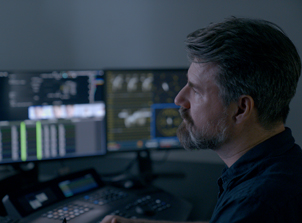
“Be a geek about your industry, cameras, lighting, lenses. Watch movies, ads and everything that’s good. Study art and artists, if only to have common points of reference. Remember that the grading part is only a portion of what makes a good colourist: you’re the host, therapist, barman and ringmaster.”
Details
Colourist: Simon Astbury
Role: Head of Colour
Web: Digital Domain Shanghai




